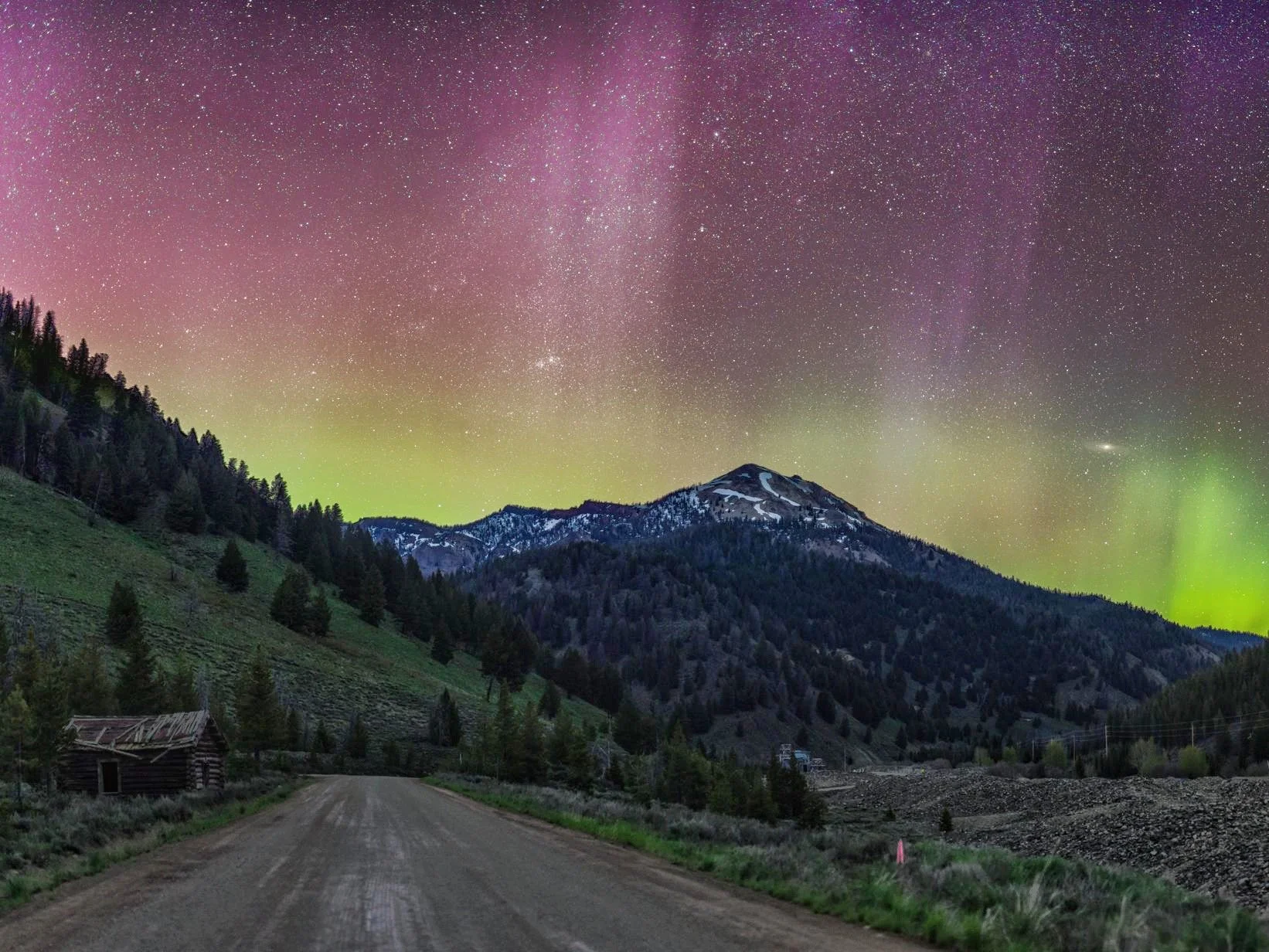
AURORA OR AIRGLOW?
INTRODUCTION
The night sky has long captivated humanity, not only for its vast expanse and the mysteries it holds but also for the spectacular light shows it occasionally presents: the aurora and airglow. Though both phenomena light up the sky in an array of colors, they are fundamentally different in their origins and appearances. This article delves into these differences, exploring the science behind each and their significance to our understanding of Earth’s atmosphere and beyond.
UNDERSTANDING THE AURORA
Auroras, commonly known as the Northern and Southern Lights (Aurora Borealis and Aurora Australis, respectively), are natural light displays in the Earth’s sky, predominantly seen in high-latitude regions around the Arctic and Antarctic. They are caused by the interaction between the Earth’s magnetosphere and charged particles from the solar wind. These particles are directed towards the poles by the Earth’s magnetic field, where they collide with nitrogen and oxygen atoms and molecules in the upper atmosphere, releasing energy in the form of light.

VISUAL CHARACTERISTICS
Auroras are known for their dynamic displays, which can include rippling curtains, pulsating glows, or steady arcs that light up the night sky. The colors of an aurora depend on the type of gas molecules involved and their altitude. For instance, oxygen at high altitudes can cause a rare red aurora, while the common green aurora is produced by oxygen at lower altitudes. Nitrogen contributes blue or purplish-red hues.
OBSERVATION
The best places to observe auroras are in high-latitude regions, such as near the Arctic and Antarctic circles. Ideal conditions include dark, clear nights away from city lights, with increased activity around the equinoxes. Geomagnetic storms, resulting from enhanced solar activity, can push auroral displays further towards the equator, making them visible at lower latitudes. There are two main types of auroras - the Aurora Borealis in the northern hemisphere and the Aurora Australis in the southern hemisphere. Each occurs near the respective magnetic poles, creating spectacular light shows that range in color from green to red to purple.
Airglow is a soft, continuous light emission from the Earth’s atmosphere, visible worldwide every night. It’s not triggered by solar activity but results from the rejoining of atoms and molecules ionized by the sun’s rays during the day, releasing energy as light visible in darkness. Visible under clear, dark skies away from urban light pollution, airglow gently illuminates the night sky with a diffuse glow, usually in green or red shades, contrasting with the bright and dynamic displays of auroras. The glow is primarily caused by chemical reactions involving oxygen, sodium, and nitrogen—such as oxygen atoms emitting light when they recombine after solar separation. This phenomenon adds a subtle beauty to the night sky, lacking the dramatic patterns of auroras but offering a serene backdrop visible from any part of the Earth.
VISUAL APPEARANCES
The most striking difference between auroras and airglow is their visual appearance. Auroras offer bright, dynamic light displays with distinct patterns and movements, while airglow provides a gentle, uniform glow that bathes the entire sky.
Auroras are primarily observed near the polar regions, linked to solar activity and the Earth’s magnetic field. In contrast, airglow occurs globally, visible every night, provided the conditions are right. Auroras are somewhat predictable based on solar activity, with periods of high solar wind leading to more intense displays. Airglow, however, is a constant presence, although its intensity can vary based on atmospheric conditions.
SCIENTIFIC RESEARCH
Studying auroras helps scientists understand the Earth’s magnetosphere and the complex interactions between solar wind and atmospheric particles. This research is crucial for understanding space weather and its impact on satellite communications and navigation systems. Research into airglow provides valuable insights into the composition, density, and dynamics of the Earth’s upper atmosphere. It helps scientists study atmospheric waves, weather patterns in space, and the impact of human activities on the atmosphere.
Both phenomena have implications for technology, as intense auroral activity can disrupt communications and GPS signals, while understanding airglow can improve our models of the atmosphere, benefiting satellite orbit predictions and climate studies.






